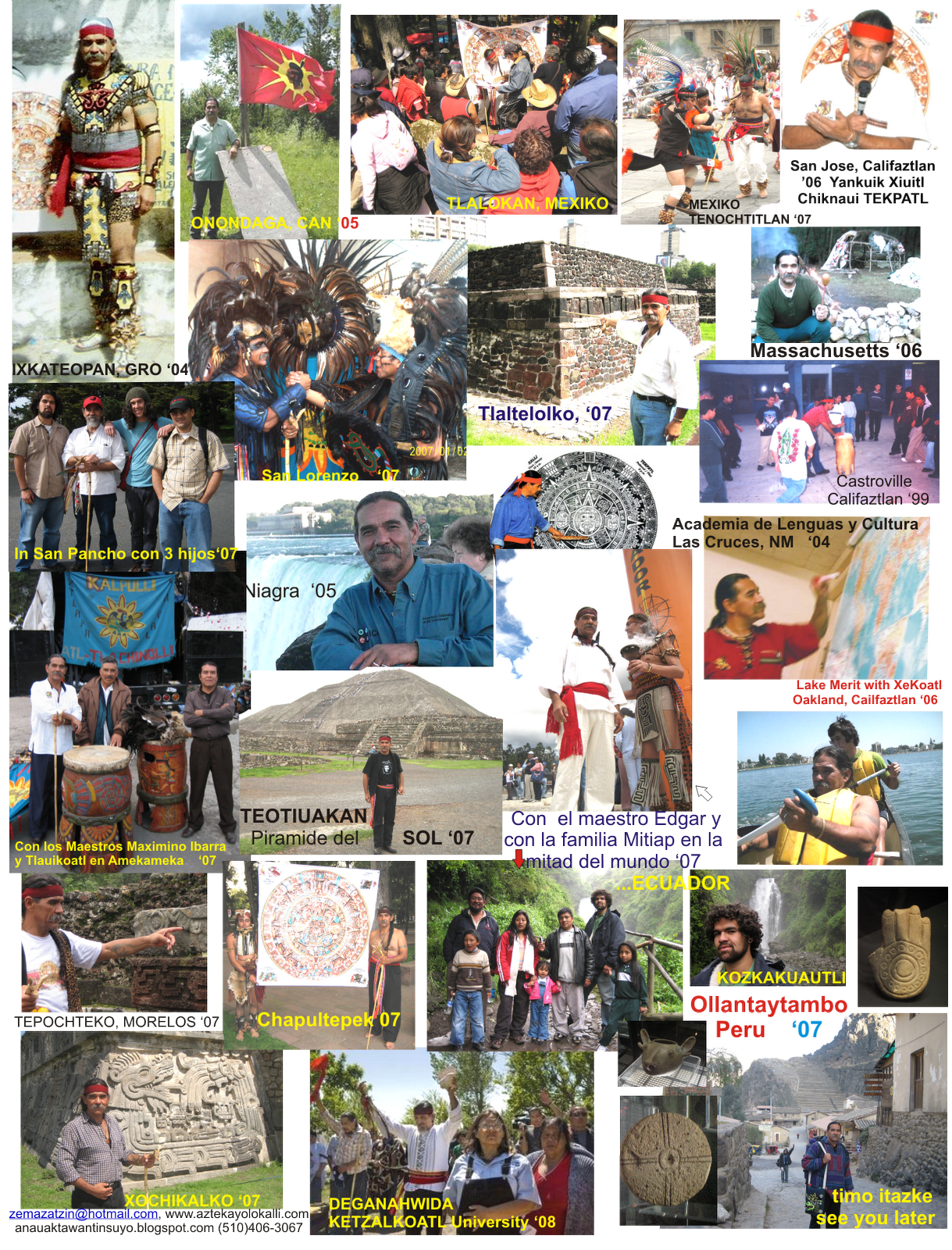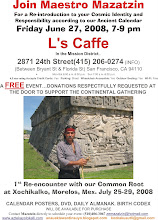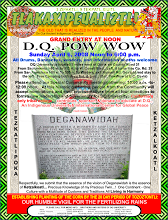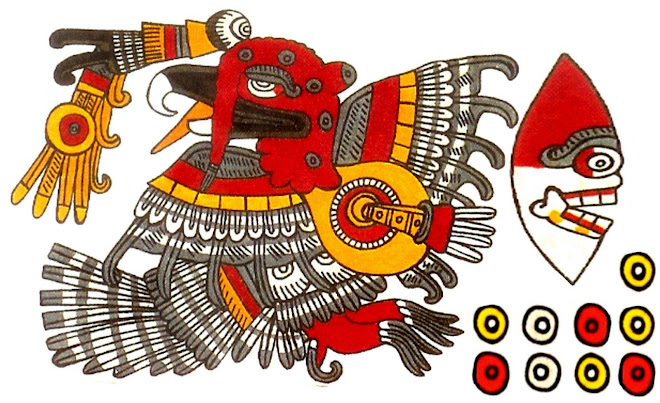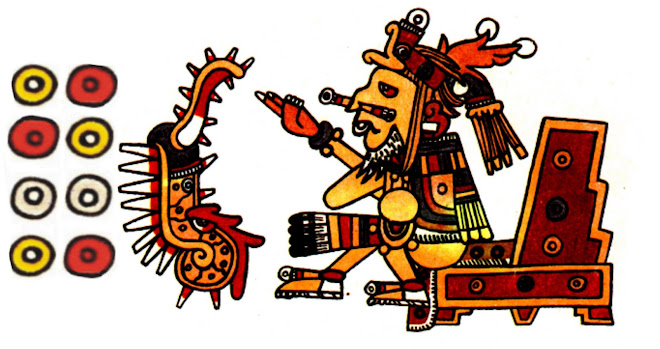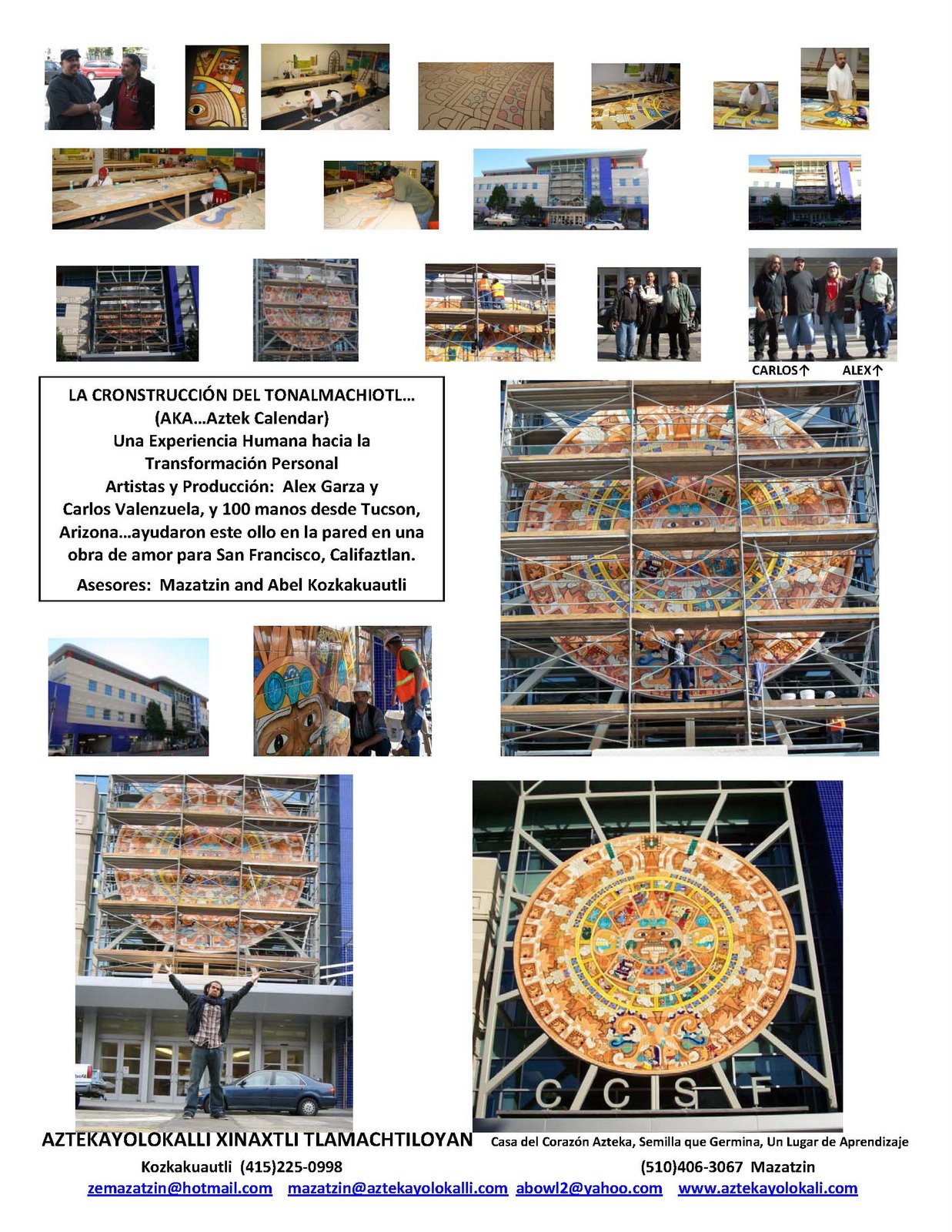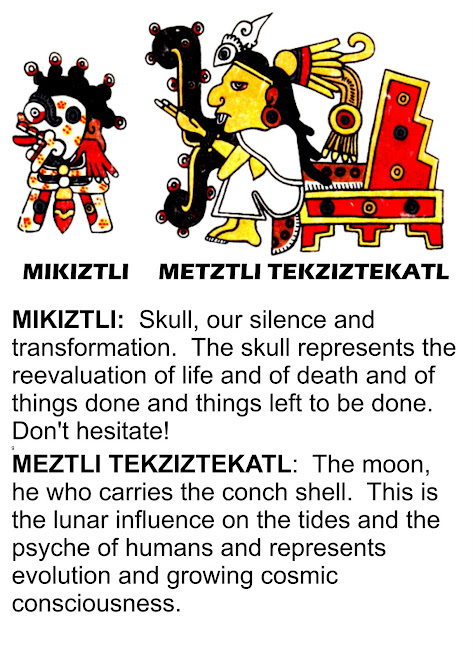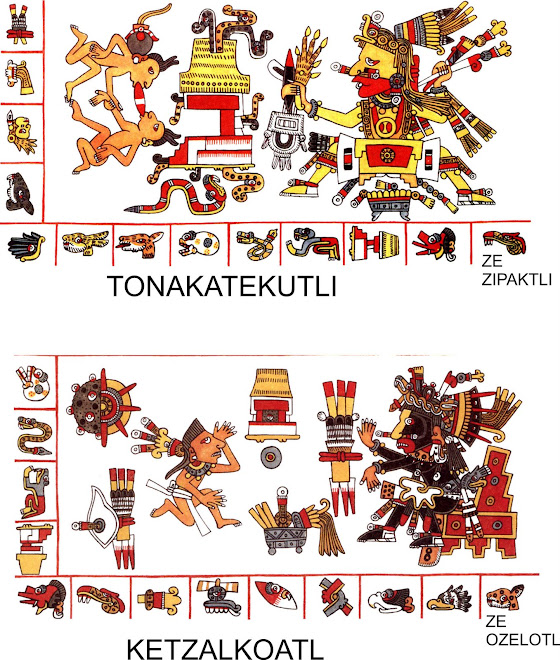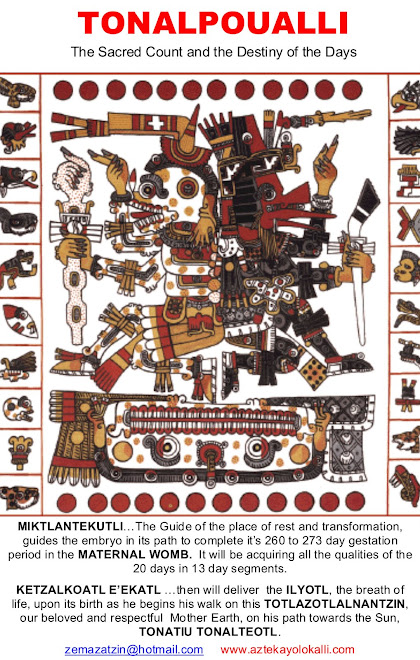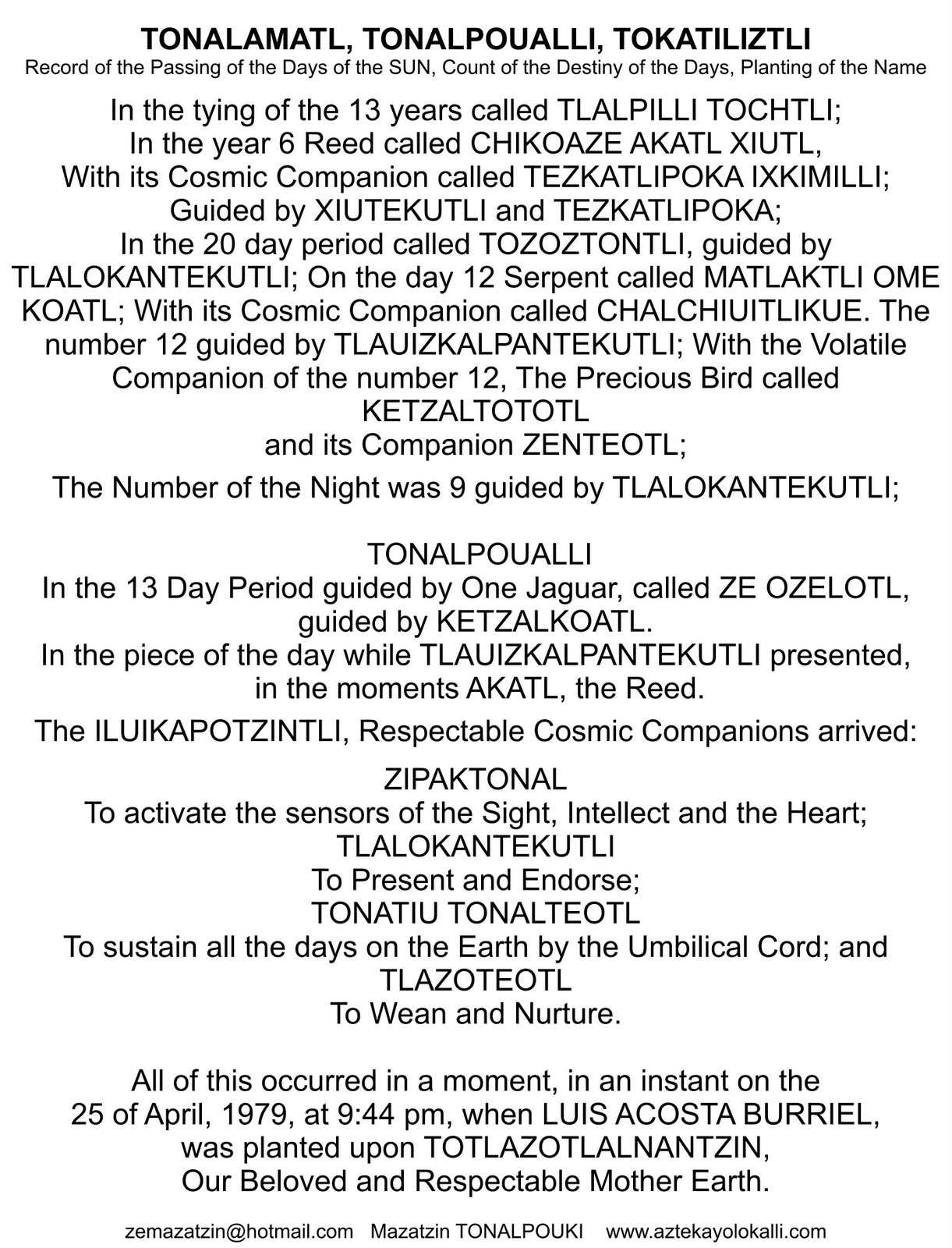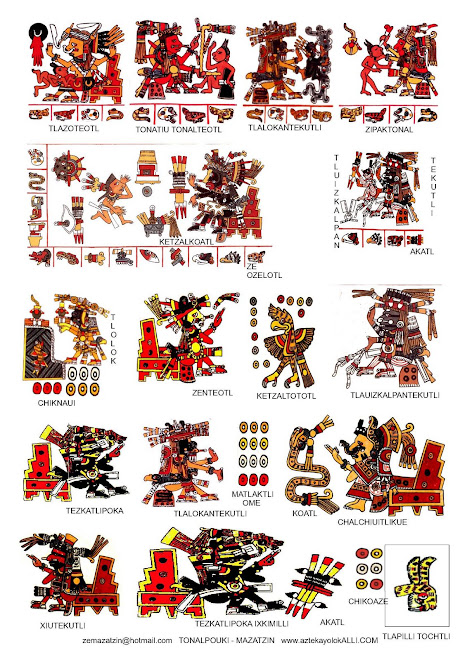It is logical that their human calendar (TONALPOUALLI-260 days), would be based on their astronomical calendar (XIUPOUALLI-365 1-4 days) due to their concept of the human being as part of the Earth and of the Universe. This indicated to them that their behavior should be adjusted to the behavior of the Earth itself and the known astronomical environment to be in accordance to nature, both terrestial and celestial.
It is composed of 18 groups of 20 day giving us 360 days that run consecutively; and a small group of 5 1/4 days called NEMONTEMI, which are the last five days making up the solar year. In correlation with the Gregorian calendar the first day of the year is on March 12 except on leap years when the first day is March 11. The Europeans put an extra day in February moving all the days forward one day.
Of the 20 days 4 of them are also the carriers of the years which begin to be measured daily at different times of the day: TOCHTLI-Rabbit at sun rise, 6a.m. to 6 a.m.; AKATL-Reed at noon, 12 p.m. to 12 p.m.; TEKPATL-Flint at sun down, 6 p.m. to 6 p.m.; and KALLI-House at midnight, 12 a.m to 12 a.m.
In all the his-story books these days are erroneously called bad luck days, no good days, etc. However, the word NEMONTEMI means what has been live and to complete the cycle. Our grandfathers tell us these days are really the most important days of the year as they are specially equipt for reflection, balance and adjustment of our lives as we consider the year just past and evaluate the one coming.
The NEMONTEMI, the last five days of the year, have symbols and numbers also, but they are not in the same sequence. They are making a TONALPOUALLI in 52 years so only 5 of the 20-day symbols are used in each year. The first 5 days are for TOCHTLI; the second 5 days are for AKATL; the third group of 5 days is for TEKPATL; and the last groups of 5 days are for the year KALLI. The ¼ day is then added at the end of the last day of NEMONTEMI, making the next year begin 6 hours later (eliminating the need for a leap year).
TODAY , MARCH 6, 2008, WAS THE FIRST DAY OF THE NEMONTEMI CALLED 10 MIKIZTLI OR SKULL, WHICH IS THE BEGINNING OF THE LAST FIVE DAYS OF THE YEAR 8 AKATL, OR REED. IT BEGAN AT NOON AND WILL END AT NOON ON THE 7TH OF MARCH.
THE SKULL REPRESENTS OUR SILENCE AND TRANSFORMATION, AND IT IS THE RE-EVALUATION OF LIFE AND OF DEATH AND OF THINGS DONE AND THINGS LEFT TO BE DONE...DON´T HESITATE!
HERE I WILL POST THE NEXT FIVE DAYS...REMEMBER THE DAYS BEGIN TO BE MEASURED AT NOON UNTIL NOON THE NEXT DAY. ON MARCH 10 AT NOON WE BEGIN THE LAST DAY ITZKUINTLI. AT NOON ON THE 11TH WE WAIT ANOTHER 6 HOURS AND BEGIN THE NEW YEAR AT 6 P.M. THE NEW YEAR WILL BE 9 FLINT, CHIKNAUI TEKPATL.
NOW REFLECT, MAKE THE NECESSARY ADJUSTMENTS AND BALANCE YOURSELF FOR THE NEW YEAR...
In Tlaneztia In Tonaltzi Tlauia
Our Sun Once Again Shines on Us
Everyday has a purpose and a reason for being, with a cosmic mission to be accomplished while it last. Every 24-hour period has its guides and influences that must nurture and fortify it to ensure its fulfillment. After thousands of years of careful observation and patient study, our grandfathers of ANAUAK (the ancient Mexican homeland extending from Nicaragua to Canada) developed a system that enabled them to identify and isolate these influences. And they called these their respectable cosmic companions. With this in hand they learned to respect everybody and everything that surrounded them, bringing harmony and peaceful coexistence with and within ILUIKATL (the cosmos).
Our Sun Once Again Shines on Us
Everyday has a purpose and a reason for being, with a cosmic mission to be accomplished while it last. Every 24-hour period has its guides and influences that must nurture and fortify it to ensure its fulfillment. After thousands of years of careful observation and patient study, our grandfathers of ANAUAK (the ancient Mexican homeland extending from Nicaragua to Canada) developed a system that enabled them to identify and isolate these influences. And they called these their respectable cosmic companions. With this in hand they learned to respect everybody and everything that surrounded them, bringing harmony and peaceful coexistence with and within ILUIKATL (the cosmos).
